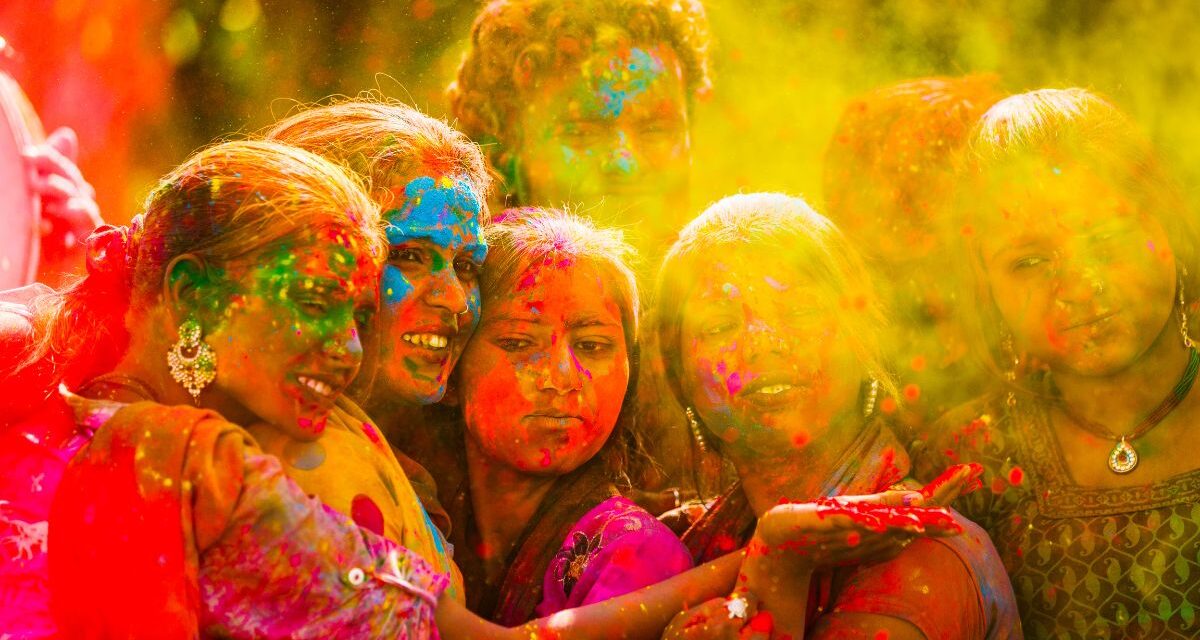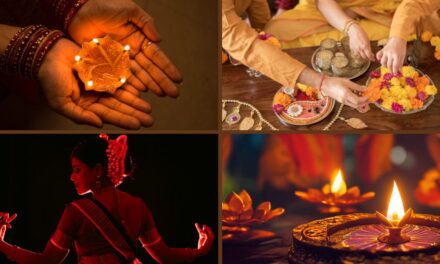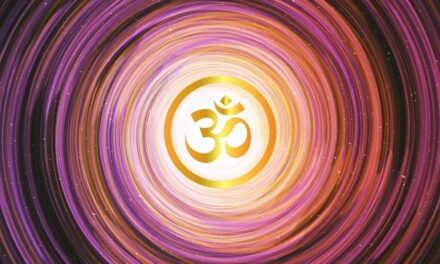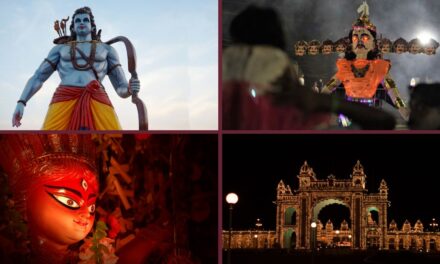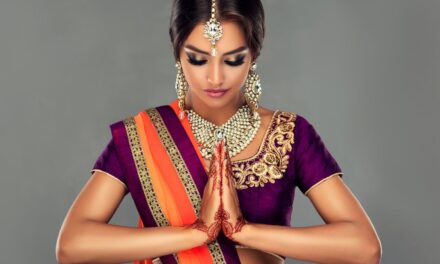Introduction and Significance of Holi
Holi is an Indian Hindu festival. It is popularly known as the festival of colours. Holi is one of the most loved festivals in the country thanks to its joyful nature.
The festival of Holi is celebrated in two parts. It starts with ‘Holika Dahan’ which is the evening prior to the main day of Holi.
During Holika Dahan, people from various parts of the country arrange for huge community bonfires. They light up these bonfires and people gather around the fire to chant and pray to the almighty for his or her blessings.
The bonfires or Holika Dahan is a symbol of the burning of evil within you. A victory of good over evil.
A lot of people prefer burning the bonfires late at night and it becomes an excuse for the community to meet and socialize.
On the next day, which is considered as the main day of Holi, people play with colours and water balloons. It is customary for families, loved ones and well-wishers to put coloured powder on each other. The colour used is special, referred to as ‘Gulal’ in Hindi.
Since Holi has a playful nature to it, from morning to noon, communities gather together to play Holi. They throw colour powders and water balloons at each other. Some simply pour water from buckets over one another. Children especially love to play with the colours and water balloons.
They also use specially made water guns known as ‘pichkari’ in Hindi. These pichkaris are sold in huge numbers each year just before Holi. Over time, pichkaris have become more elaborate and children just love to play and have water fights on the day of Holi.
Holi is played for hours and is usually accompanied with music, dance and also food after the main playtime is over.
The main significance of Holi is firstly the triumph of good over evil and second, it marks the first day of spring after the winter season.
For most Indians though, Holi is a day of fun and social gathering.
By noon, the entire country looks like an abstract painting with people, streets and building premises completely covered in a plethora of colours. It is one of the most beautiful sights of India and provides a real sense of delight.
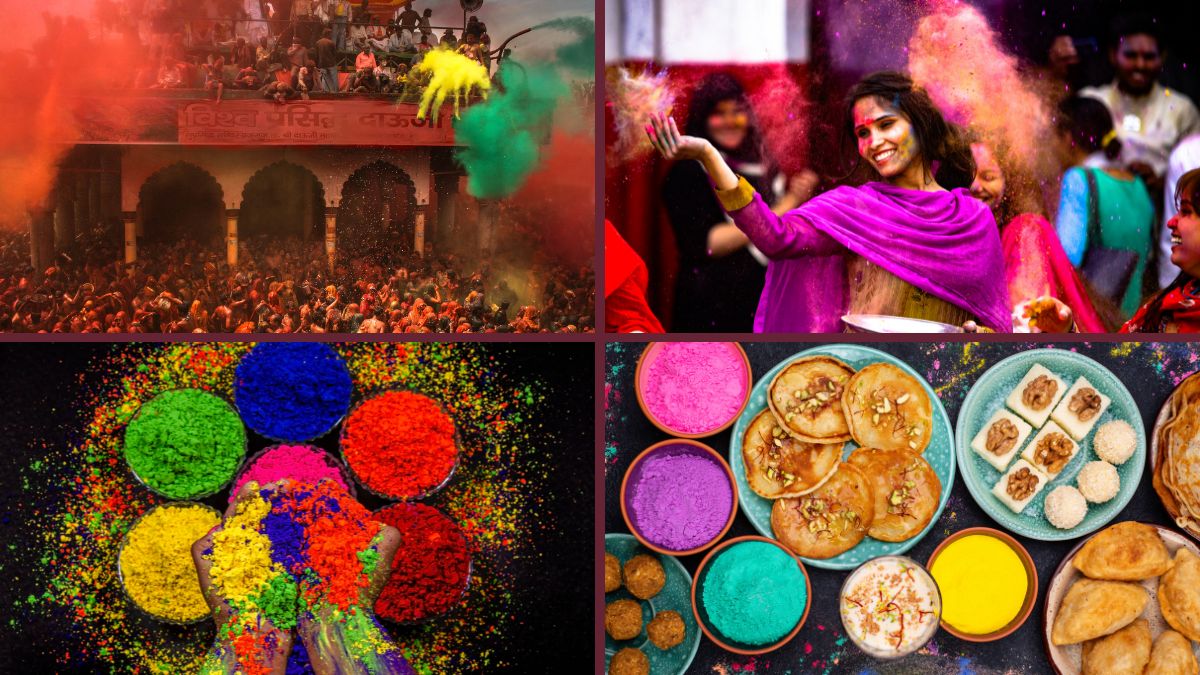
When is Holi Celebrated?
Holi is celebrated mainly in the month of March each year.
Since the dates of Holi is decided as per the Hindu calendar, the corresponding date on the English calendar varies each year. However, the date almost certainly falls during the month of March.
History, Origins and Legends of Holi
Holi is being celebrated in India since the ancient times. There have been mentions of Holi even in literature found in the 4th century.
While there are many beliefs in Hindu mythology over the origins of Holi, the most popular mythological story is that of the demon king Hiranyakashipu.
Hiranyakashipu, was a demon king who had been granted near immortality by Lord Brahma. As per the boon granted to Hiranyakashipu, no man, beast or god could cause his death either at night or during the day using any kind of weapon made of metal, wood or stone.
With his new found power, King Hiranyakashipu became self-obsessed and believed he was the rightful ruler of all three realms, heaven, earth and hell. He made all the people of his kingdom and those he conquered worship him and acknowledge him as the true God of mortals.
However, with a twist of fate, his own son Prahlad did not see King Hiranyakashipu as the ruler or God of all realms. He became a devout devotee of Lord Vishnu, the true supreme leader of the universe.
Angered by his son’s defiance, King Hiranyakashipu tried at first to influence Prahlad against Lord Vishnu. Once that did not work, he tried every possible way to kill Prahlad but was unsuccessful due to the divine interference of Lord Vishnu.
Finally, Hiranyakashipu turned to his sister Holika. His sister had a boon of having a cloak that protected her from fire. Hiranyakashipu asked Holika to take Prahlad and sit in a pyre. The idea was that if Holika held Prahlad in the fire, he would not be able to escape and get burnt to death in the bonfire.
However, when Holika did sit in the pyre with Prahlad, he started chanting mantras of Lord Vishnu. The cloak of Holika blew in the wind and covered Prahlad instead of Holika and she got burned in his place.
At the death of his sister, Hiranyakashipu could not hold on to his anger any longer. He challenged Prahlad to prove Lord Vishnu was omnipresent and stronger than him.
At that time when Hiranyakashipu was ready to destroy everything, Lord Vishnu appeared in the form of Narasimha – half man, half lion. He had giant sharp claws and attacked Hiranyakashipu.
At the exact moment between night and day, at the threshold of the mortal and immortal realms, Narasimha killed Hiranyakashipu using his claws. Once things calmed down, Narasimha went back to his original form as Lord Vishnu and made Prahlad the king. He was given the simple boon of being a fair and just king who was able to conduct his duties in a fair manner.
This is why even today, the evening prior to Holi, pyres or bonfires are lit to burn Holika, the demon as a symbol of eliminating evil over the good.
Apart from the story of Hiranyakashipu, Holi has a number of other legends associated with it related to Lord Shiva, Lord Krishna and the famous divine dance of Rasleela. It is believed the ritual of playing with colours came from Rasleela.
Rasleela is also the reason why Holi is also referred to as the festival of love or dance of love.
Social Impact of Holi on Indian Society
Festival of Holi has had a profound social impact on Indian society.
Firstly, Holi is one of those festivals that is played in exactly the same manner by all walks of society.
It is a great leveller as no matter who you are, rich or poor, living in a metro city or remote village, the festival of Holi is always played in the same way, together without any inhibitions. It is the gathering and intermingling of society that helps in bringing people together and simply interacting with joy.
Second, since the main day of Holi does not have any religious practices or is not associated with prayer ceremonies, many people from other faiths and religions join in during the play with coloured powders, water balloons, pichkaris etc. This is essential for building a strong bond amongst our society and promote social harmony.
Holi is now so famous that many international travellers to India prefer visiting during the month of March to participate in the festivities.
Final Thoughts
The festival of Holi is joy. It is love. It is the coming together of the entire community and celebrating as one happy family.
What people associate most with Holi are the colours. Truly, Holi is one of India’s most beloved festivals where everyone comes together and for those few hours, become part of one happy work of art.

